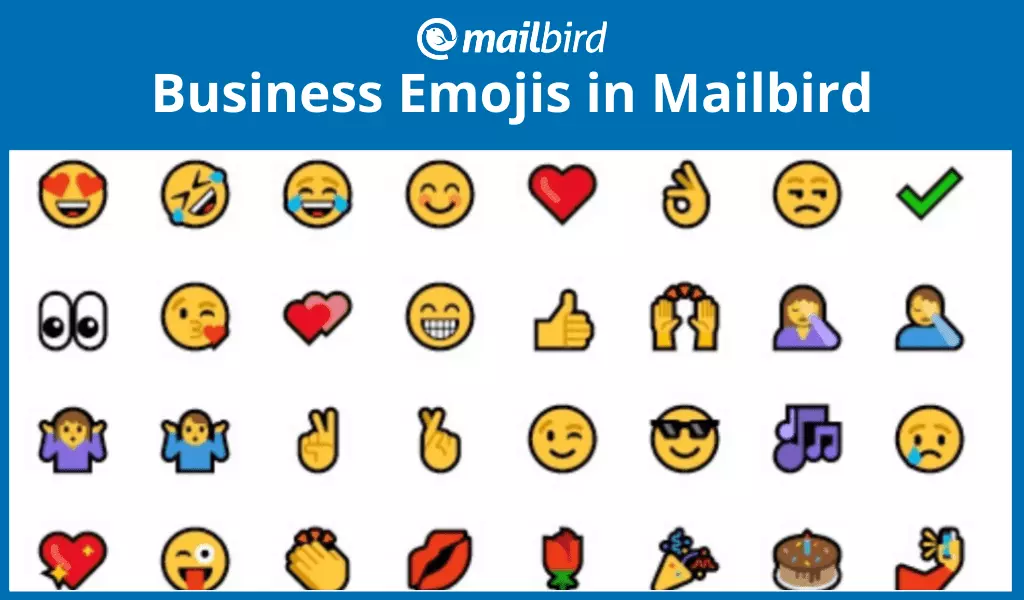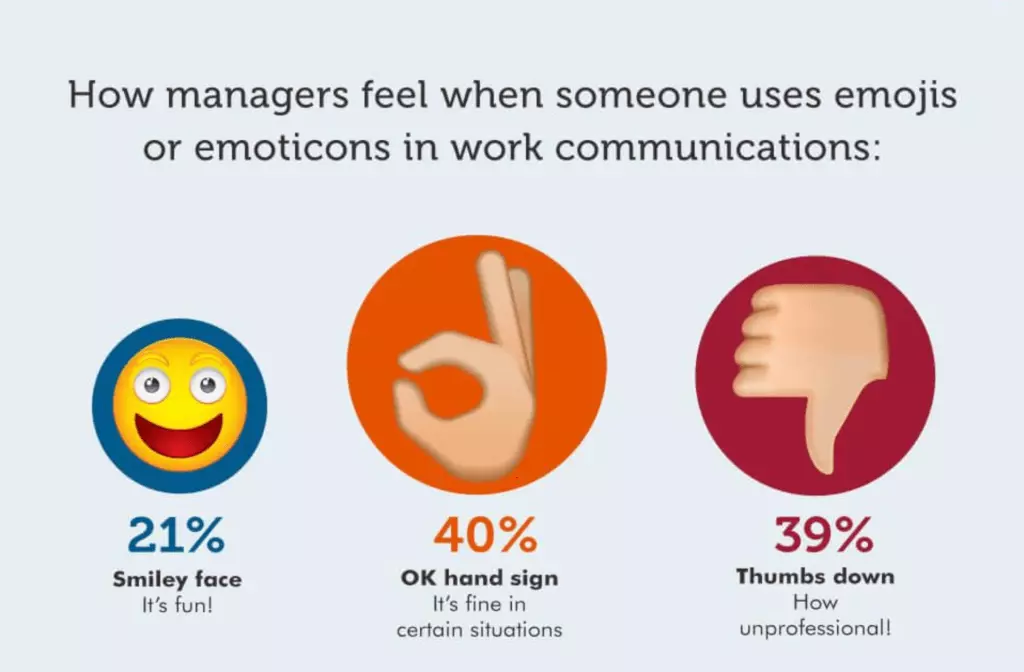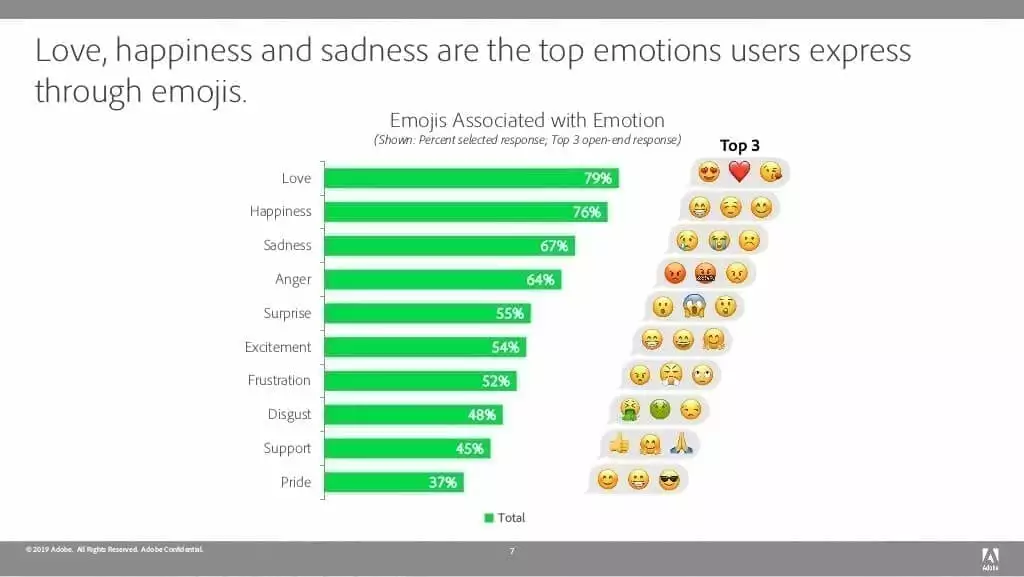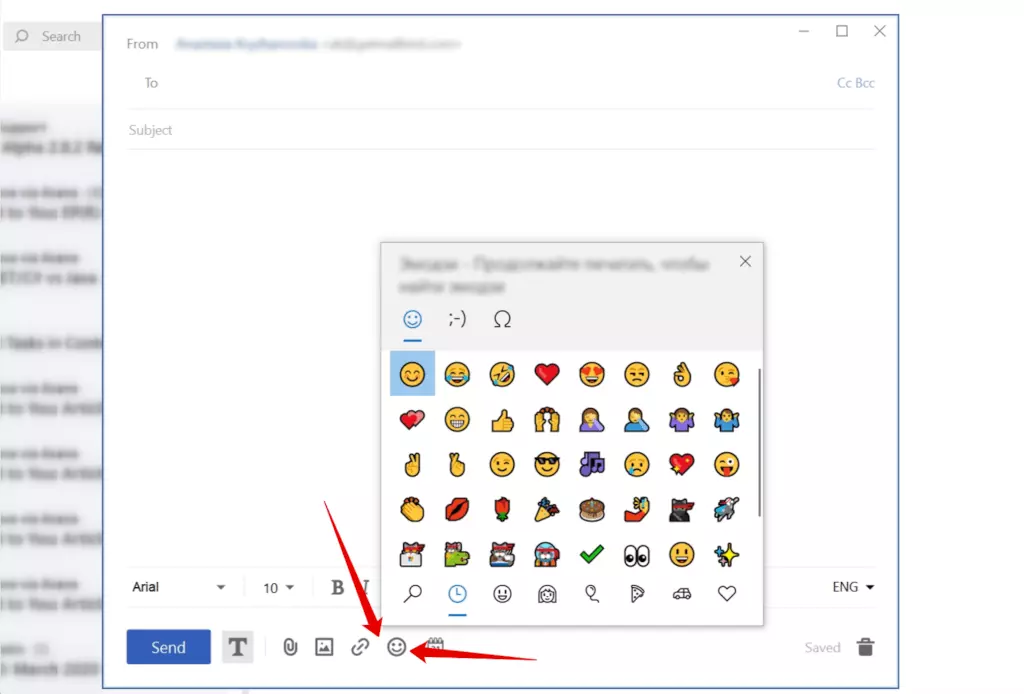Is it Safe to use Emojis in Business Communication?

Emojis have come a long way, moving from special symbols to graphic icons, and they are now a big part of our modern lifestyle. People use emojis in chat rooms and on social media, and with so many businesses transitioning to the online space, you might be wondering, is it okay to use emojis in business communication as well?
Emojis help readers determine your tone of voice and express emotions, making them a solid communication tool. At the same time, there are some nuances to the use of emojis, so let's see how to use business emojis correctly.
Should You Use Emojis in Business Communication?
Quite a few studies suggest that the use of emojis can have a positive effect on communication, so there's no reason to straight-out ban them in business. Industrial and Organizational Psychology specialists at Florida Institute of Technology performed a study on 152 professionals and found that messages that contained a smiley (?) face sounded more positive than the same messages without any emojis.
Other studies suggest that in a work setting, using out-of-business emojis might be deemed unprofessional. The OfficeTeam recruiting agency surveyed 306 senior managers in the US, and 39% of respondents perceived emoticons in business communication as a sign of incompetence. However, 40% of senior managers in the same survey said it's okay to use emojis sometimes.

Adobe has done a more comprehensive report based on a survey of 1000 US emoji users aged 16 to 73, which is a good sample compared to several other studies which have only used samples of 20 to 200 people. The survey shows that almost all of these users, 93% to be precise, feel that a business-time emoji lightens up the mood.

Here are a few more clues that can help you figure out if you should use emojis at your workplace:
- 83% of respondents most frequently use emojis when messaging their friends, and only 19% to coworkers.
- 61% of respondents use emojis in a work setting and 36% of them in communications with people of their same level.
- 78% find they like the person communicating with them more.
- Only 4% use emoticons in external-facing communication.
Now, the last one is interesting, as external-facing communication implies your customers. According to a 2017 report by Return Path, an analysis of Valentine's Day promotional emails shows that using the ? emoji in the subject line can increase the read rate by 4% and inbox placement by 6%. The report was based on a study of more than five billion commercial emails. And in the aforementioned Adobe report, 60% of respondents said they liked brands that use emojis in their emails.
So what do all these numbers tell us? That there's a time and a place for using emojis in business communication, unlike on social media where there is no such restriction. Before adding a smiley face to an email, you might want to first evaluate what kind of relationship you have with the person it will be addressed to. How well do you know them, and how old are they? Younger people and teens seem to respond to emojis more positively.
|
Did you know? The first documented use of an emoticon was by a computer science professor, Scott Fahlman, at Carnegie Mellon University who proposed the smiley face ":-)" as a joke marker on a message board. |
When Is It Safe to Use Emojis in Business Emails?
Emoticons are a part of Internet speech, so why not use them? It just depends on the type of situation you are using them in. Communication is everything in a work environment: it helps people collaborate, be more productive, and create a sense of camaraderie. Whether your company uses hybrid communications or strictly cloud-based platforms, it’s about finding the right balance when using emojis. Here are a few instances when it's safe.
When you're trying to diffuse a situation or give critical feedback
A study of the Effects of Emoticons on the Acceptance of Negative Feedback in Computer-Mediated Communication suggests that the use of liking emoticons (i.e., smileys associated with positive emotion) increases the perceived good intention of feedback that's meant to be critical.
The graphic emojis are more associated with a human face, and they provide an emotional cue for a message. This can be helpful since you can't see facial expressions in email communication.
When you're sending short logistical messages
Some email strings turn into a sort of chat when you start exchanging short messages. Responding with a "Sure, thanks! :)" might just be a formality to show a colleague you have read the message. At the same time, such messages don't require a formal style.
When you're trying to cheer someone up
Adding business emojis such as a smiley face can make you seem more approachable, kind, and fun. According to SurveyMonkey's data, around half of the younger adults who participated in their survey think that, and only a quarter of respondents aged 45+ think emojis are unprofessional or annoying.
For example, if you are welcoming a new person to the team, you have a 50/50 chance of making them ? in response.
When you're an HR specialist who sends administrative emails to the whole company
The HR department seems to have a free pass on using emojis. Just think about it: all those "Happy Birthday!" emails wouldn't be so warm and lively without a bunch of smiley faces and a ? icon, or seem as caring when they have to relay to the group that one of your colleagues is ? and won't be available.
People also perceive pictorial information better than text, so if it's a longer email, emojis might help readers pay closer attention to the details.
|
Tip: Ask your HR department (or do it yourself if you lead a small team) to conduct polls to see how your colleagues respond to emoticons. Since we all perceive emojis differently, a lot of people like them, yet some might also think they lower the competence of a person using them, so it's good to know where your company or team stands. |
Emojis in Mailbird
Mailbird knows that there's a time and place for emoticons in emails, as well as what the best customer emojis are, and now you can use Windows 10 emojis when sending emails in Mailbird.
If you want to insert an emoji into your email, go to the formatting bar beside the Send button and click on the smiley face.

You can also initiate the Windows 10 emoji window by using a keyboard shortcut: "Windows key" + "full stop (period) key." But you need to upgrade Windows 10 to see the emoji button in Mailbird.
What about Windows 11?
Mailbird is fully compatible with the new Windows version, so you shouldn't have any problems transitioning. But if you have any questions about using Mailbird on Windows 11, you can always contact our friendly support service.
Conclusion
Emojis are practically ingrained into our daily online communication over on social media and other channels. They help express emotions and provide emotional cues for the information in messages. And there is evidence to suggest that business emojis are safe to use in work emails and may even aid you in promoting your business.
You can use emojis in your personal and business communications with Mailbird — an email client designed to help you manage emails more efficiently, especially if you have multiple accounts.
Try Mailbird, the best Windows app to manage multiple email accounts
FAQ
How do businesses use emojis?
Businesses can use emojis in internal work communication to convey the underlying tone of the message. They can also use them in outgoing business correspondence to resonate with millennials who use emoticons more than any other age group.
Are emojis appropriate in business?
If the workplace leans towards informal, the use of emojis is appropriate. Using emojis is acceptable when you are familiar with the individual you're sending the email to. However, when you correspond with unfamiliar individuals, it is best to steer clear of emojis.
Is using emojis unprofessional?
Using an emoji is acceptable among young professionals who believe it adds value to the communication. However, the same is deemed unprofessional among older professionals. Therefore, using emojis in business communications depends on who you're corresponding with.
Are emojis helpful?
Using emojis can help express an individual's message better and more creatively. It also serves as a replacement for words. They are widely popular in today's culture and have brought a change in how millennials and younger adults communicate. As such, some people argue that emojis are a language of their own made up of visual symbols.